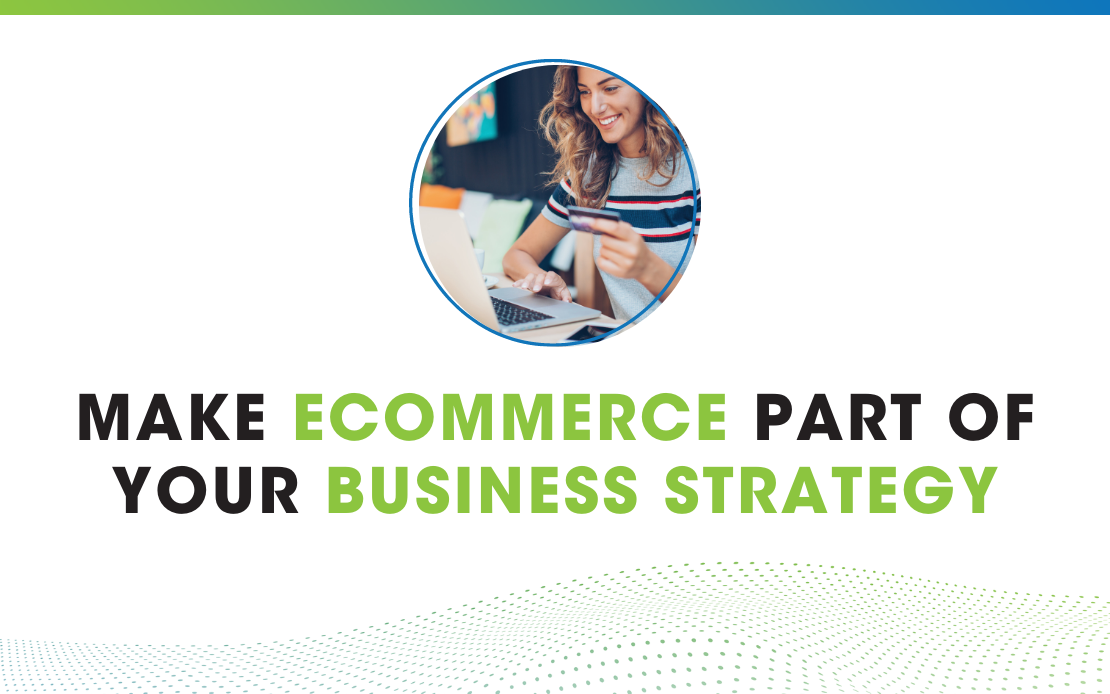
Online shopping has come a long way since the first eCommerce company, Boston Computer Exchange, was launched in 1982. Although not widely used, the internet was somewhat of a thing back then, and BCE served as a marketplace for buying and selling used computers.
A recent eMarketer report estimates that today, nearly 58% of internet users worldwide ages 14 and older, will make an online purchase at least once per month in 2021. That’s a staggering 2.46 billion people clicking ‘checkout’! If you’re in the business of selling any type of product, now is the time to expand your offerings online.
In this blog, we’ll cover the basics of the top 3 ways to sell via the internet – an eCommerce website, marketplaces, and social shopping.
eCommerce Website
Having a website with eCommerce capabilities can mean more sales, lower overhead costs, and fewer growing pains for your business while still giving your customers a unique brand experience. Whether you have a brick-and-mortar location or you plan to sell online only, an eCommerce website is a must-have for businesses selling goods in today’s increasingly digital world.
Fortunately, building an eCommerce website is easier than ever before with the multitude of software options available. If you’re tech-savvy, you can use tools like WooCommerce or BigCommerce which are endlessly customizable add-on options to any WordPress website. If coding isn’t in your wheelhouse there are options like Shopify and Wix, which allow you to tailor a templated online store to fit your needs and style. You’ll want to do some major research to help you decide the best option for your business.
Although an eCommerce website can be a profitable addition to any online strategy, keep in mind that you will need to not only invest money into it, but your time as well. Even after the initial setup, an eCommerce website needs to be maintained with product and technical updates. You will also need to invest in digital marketing tactics to drive traffic to your website as well as analyze data to help you engage and retain existing customers.
If just the thought of that seems overwhelming, don’t stress. River Valley Media Group has your back! From the design and creation of your eCommerce website using WooCommerce or Shopify to the upkeep and continuing promotion of it, we can handle it all while you kick your feet up. Just kidding, we know as a business owner downtime is hard to come by. Give us a shout so we can take this off your already full plate!
Marketplaces
Amazon, eBay, Etsy, and Google Shopping are all examples of online marketplaces. These sites allow businesses to gain brand awareness and acquire new customers with lower costs since the marketplace already has an established infrastructure for handling things like site security, logistics, and marketing. Another advantage is that the trust consumers have for the marketplace itself extends to the businesses selling their products, thus reducing the time and effort needed for a business to establish itself.
It may work for some businesses to sell only via marketplaces, however, for most we recommend using them in addition to your own eCommerce website. This is because the most important thing to an e-marketplace is their bottom line, not yours. Rules and regulations can change without consideration for how they will impact each individual seller. Competition can be steep, and preferential treatment will be given to best-sellers both by the marketplace and customers. Not to mention the fact that you won’t be getting the same valuable customer data that you get from purchases made on your eCommerce website. Data can be crucial for your business’s growth and customer retention.
Social Shopping
Social shopping, also referred to as social commerce, is a recent development by several social media platforms that allows customers to purchase from brands without leaving the social site. So far, this feature is offered by Facebook, Instagram, Pinterest, Snapchat, and TikTok. Although newly launched, already 48% of internet users, ages 18-34, have purchased through social media.
Similar to e-marketplaces, social commerce is a low-cost-high-reach business model. By meeting your customers where they already are and making it easier for them to purchase, you stand a better chance of increasing your profits. Social shopping, like all things social media, is a great way to connect and engage with your customers.
A hindrance to the relationship you build with your customers through social shopping is the lack of data you will receive from purchases. For you to give your customers the personalized experience they have come to expect, you’ll need to gain information about them. A lot of the data generated by a social commerce purchase is given to the platform itself, not the seller.
There is also the trust factor. A recent survey by Malwarebytes found that as many as 95% of people don’t trust social media with their personal data, something they’ll have to hand over to complete a social shopping transaction. Ultimately, whether your business will benefit from social commerce depends on your target audience. You want to sell on the platforms they frequently and comfortably visit.
Find What’s Right for You
Every business is different with distinct needs. For smaller businesses, those just getting started, or folks who simply don’t want to spend the money and time needed for an eCommerce website, e-marketplaces, or social shopping may be the way to go. Those that have a larger selection and an already established customer base may not reap as many benefits from a marketplace. We suggest taking time to explore these different options before deciding which channel, or mix of channels, is right for your business. Not sure where to start? Our experts at River Valley Media Group are happy to help! Contact us today!
